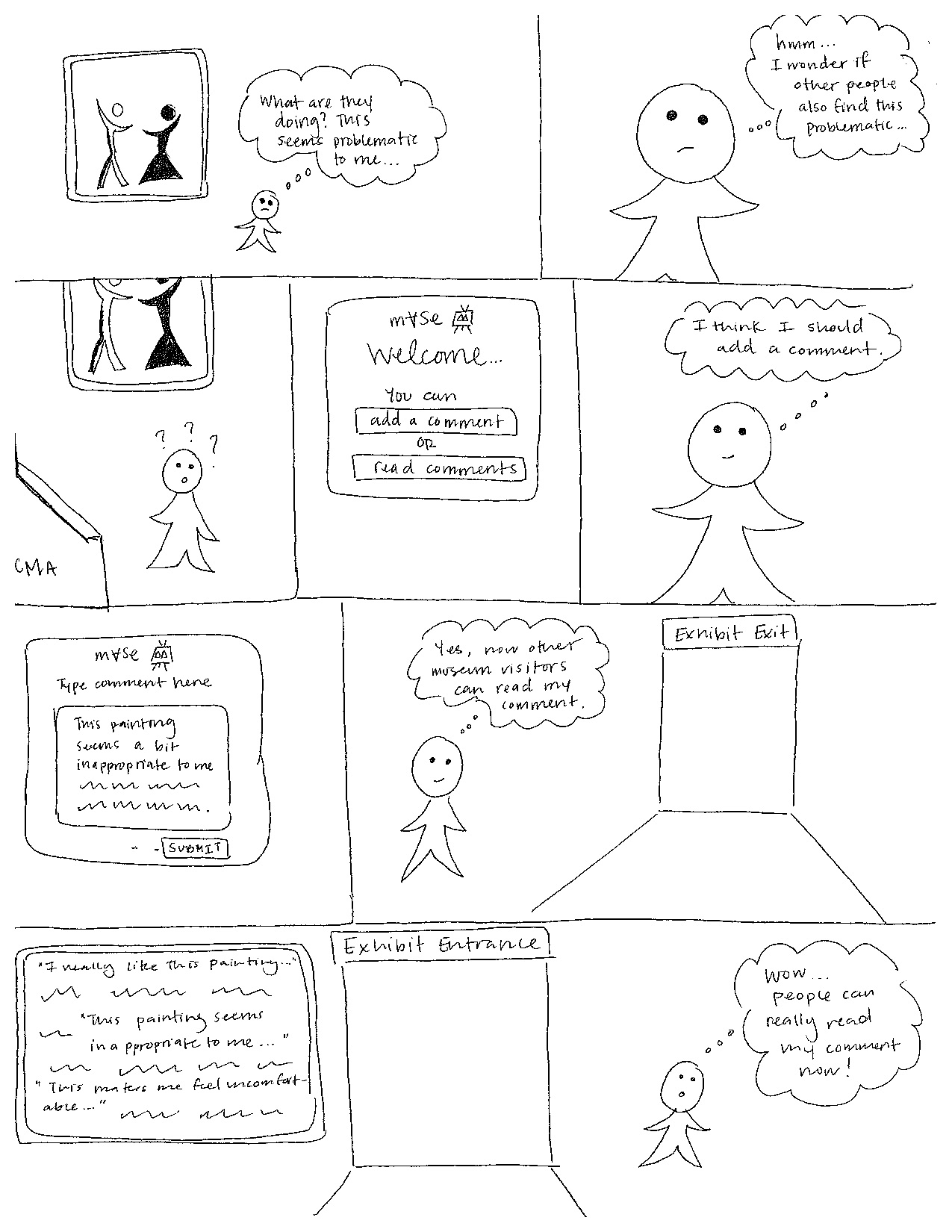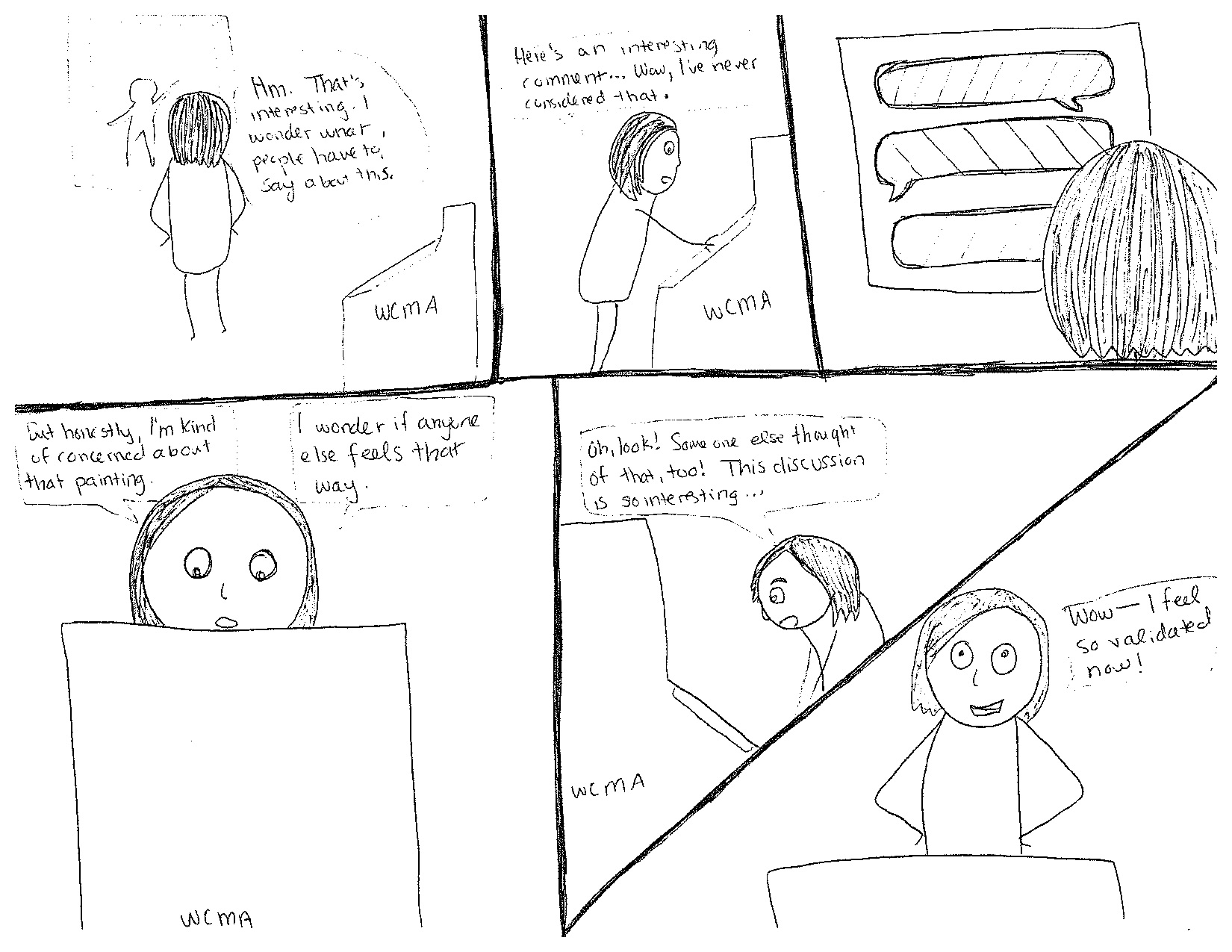Project Design Review
From our design sketches, we decided to implement a museum installation to make exhibits more accessible for visitors and to facilitate conversations about art. We chose this design to maximize visitor participation and usability. People may be less likely to participate if it requires extra effort such as downloading an app. This design is a unique, quick and immediate way for visitors to interact with the museum. Having a device installed in the museum allows museum curators to display specific prompts that will provoke discussion around a specific set of topics. The installation can also allow users to engage in free discussion with no prompts. This design is well-suited for our target visitors because the museum installation is an easy way to learn about other people’s opinions, share opinions and communicate with both WCMA staff members and other visitors. This design will facilitate topics of discussion, controversy and PoC-related topics.
These tasks are more compelling than others because we are solving problems that repeatedly came up in our contextual inquiries. Our design will allow visitors to extend previously existing tasks, such as creating alternative interpretations and critiquing the museum/exhibit. Most of these discussions already take place at WCMA, but there is no way for visitors to immediately read or contribute ideas while they are in the exhibit.
One criticism we had early in our design process was that our project would put a burden on specific groups of visitors, i.e. people of color. We accounted for this by making the museum installation accessible to everyone, anonymous, and very optional. We believe that people who will use this installation will be motivated to share their thoughts only if they want to, rather than be put in a situation where they are expected to contribute.
Task 1: Creating alternative interpretations and critiques
In this scenario, a museum visitor comes across a painting he finds problematic. He wonders if other people, too find this painting problematic, for he does not know what to make out of it. Luckily, WCMA has the m∀se installation where one can share alternative interpretations.

Task 2: Reading alternative interpretations, critiques, and ongoing discussions
Here, we have a museum visitor who wants to know more about what other people have to say about the painting she is currently viewing. She comes across an interpreation she never considered through the m∀se installation at WCMA. She continues reading more comments and feels that her interpretations and feelings have been validated.
